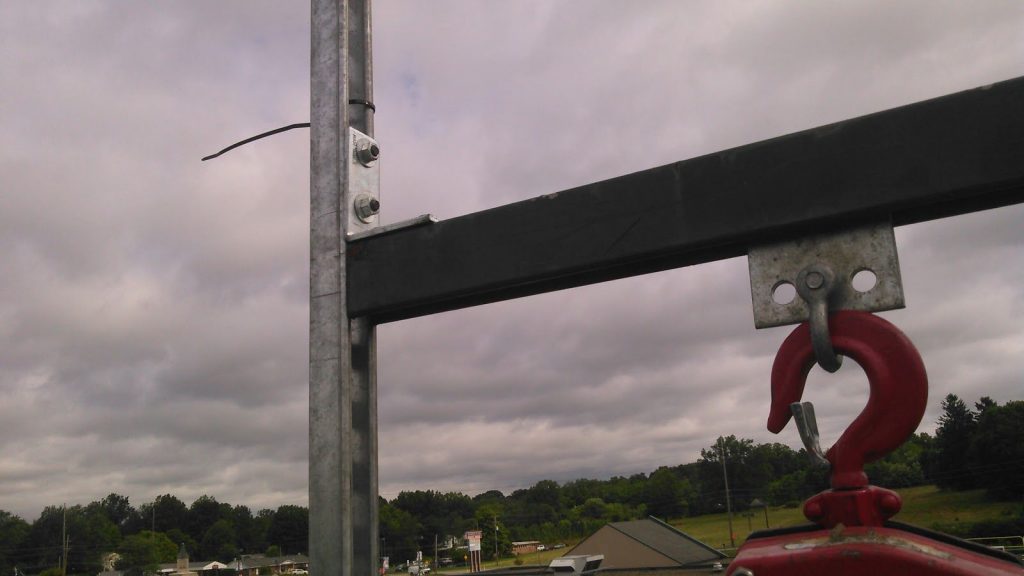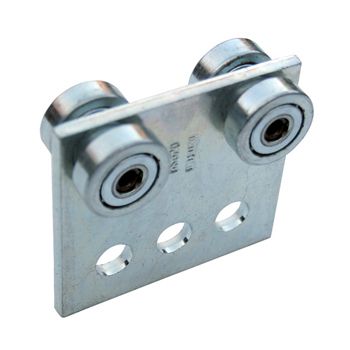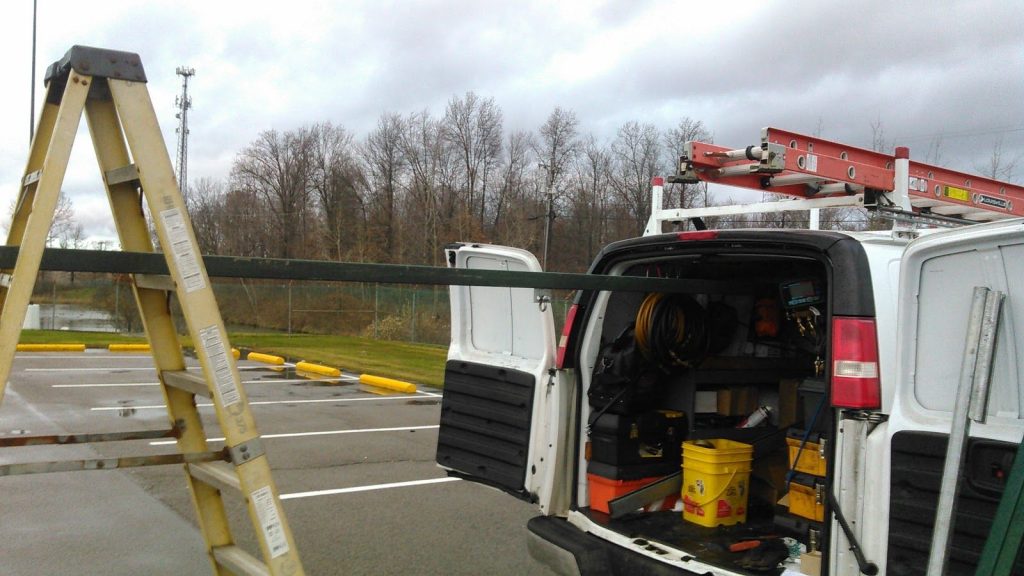Get Tech Tips
Subscribe to free tech tips.
Lifting Techniques Part 4 – Using Unistrut
This is Part 4 series by Senior Refrigeration Tech (and prolific writer) Jeremy Smith. Pay attention to this one, folks. I know rigging and safe lifting practices may be boring to some of you, but it could very well save your back or your life.
Disclaimer
This article is written by a technician representing his real-world experiences and his advice for best practices. You MUST understand the particular application, the weight of materials, and the load strength of every item you use—from struts to pulleys to anchors, ladders, ropes, etc. HVAC School is NOT giving OSHA-approved safety advice. Refer to your managers, safety professionals, and OSHA guidelines first and foremost. Apply any and all of these practices at your own risk with the knowledge that we are trying to help keep you from hurting (or killing) yourself.
Unistrut is your friend
The idea for a site-built, customizable gantry struck me about 4 or 5 years ago. I started by throwing a piece of unistrut over a pair of plastic folding sawhorses on the roof. The whole shebang collapsed, and I had to muscle the compressor plus the weight of the strut onto the roof, but I was convinced that the idea was sound. From that simple setup, I've experimented with using ladders, fall protection fences, and various supports I built out of unistrut. I've had varying degrees of success and have settled on a design that works and can be modified to suit the conditions on a job site.

Let's start with a solid base. Looking at the “T” shaped part laying on the roof, make each piece 6’ long at a minimum and bolt them together with a proper brace. From that solid base, install an upright and the angle bracket, again, using proper fittings. The angle brace should be 2 to 4 feet long depending on the height of the upright, and the height of the upright depends on what your job requirements are. I've used them from 30” high to one that was almost 15 feet high. Now, build a second upright, same as the first one. Remember that crossbar I said we had to just “accept” was there? Now it's time to put it there for real. Using a couple of 90° brackets, bolt your cross piece to the two uprights and check for level.

That may seem complicated to build, and maybe it is, but a part of this is laying out the basis for some other stuff later. These pictures are from a lifting job I did. Two 15-ton Copeland scrolls up through a roof hatch that came out on a mezzanine, trolley over and lowered to the main roof level.
Note that in the last picture, the chain fall is connected to a device extending out of the unistrut. That's a trolley, and it makes moving those loads very easy once you get them up onto the roof. Let's go back to our block and Tackle example earlier. The crossbar is a piece of unistrut, and instead of connecting your pulley and rope to the bar directly, you connect it to this trolley. It is now very easy to lift that load right through the roof hatch, trolley it to one side or the other, and lower it onto a cart or dolly for transport across the roof surface.

A really nice, slick setup based on this that I use very frequently is for loading and unloading these out of your truck. My van is outfitted with commercial steel shelving. If yours isn't, you may want to just skip this part. So, cut a piece of unistrut to fit across the top of those shelves. You should really have to work to get it in and out. Once it's wedged in there, it isn't going anywhere. Now, take a longer piece and support it across the rungs of a ladder parked 4-5’ off the back bumper. Bolt that piece to the crossbar you just installed, and, using a trolley and a ¼ ton hoist, you can easily move a compressor in and out of your truck.


Now for the cautionary stuff. Unistrut is awesome. It's strong and relatively light, but there are limitations to its strength. Please, before you build anything I'm suggesting here, know exactly how much your load weighs and exactly how much every single piece of your lifting equipment will support. I suggest a 2:1 safety factor, if at all possible, so if you're lifting a 100-pound load, make sure that everything in your lifting system is capable of handling twice that weight. Strength information about unistrut in its various applications can be found HERE. As you use this reference, pay attention to point load ratings and span figures. As span increases, point load decreases. You DO NOT want that strut failing under a load, so keep your loads within the limits of your equipment. If you look closely at the crossbar I use, you'll see that it is thicker than the normal 1 ⅝” unistrut. That's a 2 ⅛” piece and is much stronger. If you're going to do heavier lifts, you really need a heavier crossbar like that. Be aware; the engineering specs and the catalog are very dry, boring reading, but take the time to learn and know what your lifting gear will do before you have to really stress it and potentially injure yourself or someone else. Remember, the point of this is to lift and move things safely…
—Jeremy
Shopping list
Genuine Unistrut P2950-EG 4 Wheel Trolley Assembly for use with P1000, P1001, P5000, P5001, P5500, P5501 and All 1-5/8″ or Taller Strut Channel
Genuine Unistrut P1325-EG 4 Hole 90 Degree Angle Connector Bracket for All 1-5/8″ Strut Channel
Genuine Unistrut P1031-EG 4 Hole “T” Shaped Connector Bracket for All 1-5/8″ Strut Channel
45° inside brackets for unistrut
Links to previous articles in Jeremy's lifting techniques series:
Lifting Techniques Part 1 – Basics











Comments
Jeremy. I see the digicools. You must be a member on h-talk. Nice write up BTW
-gravity
Jeremy. I see the digicools. You must be a member on h-talk. Nice write up BTW
-gravity
Hello admin, i must say you have very interesting content here.
Your blog should go viral. You need initial traffic only.
How to get it? Search for: Mertiso’s tips go viral
Hello admin, i must say you have very interesting content here.
Your blog should go viral. You need initial traffic only.
How to get it? Search for: Mertiso’s tips go viral
To leave a comment, you need to log in.
Log In